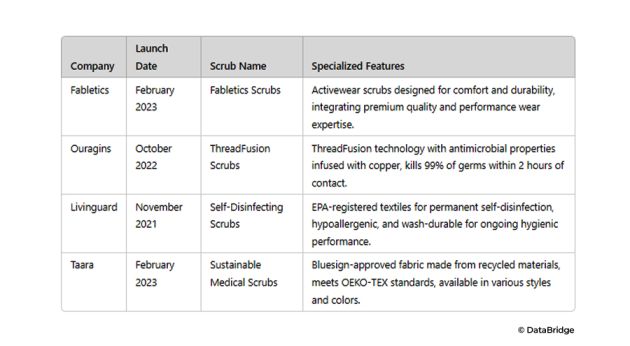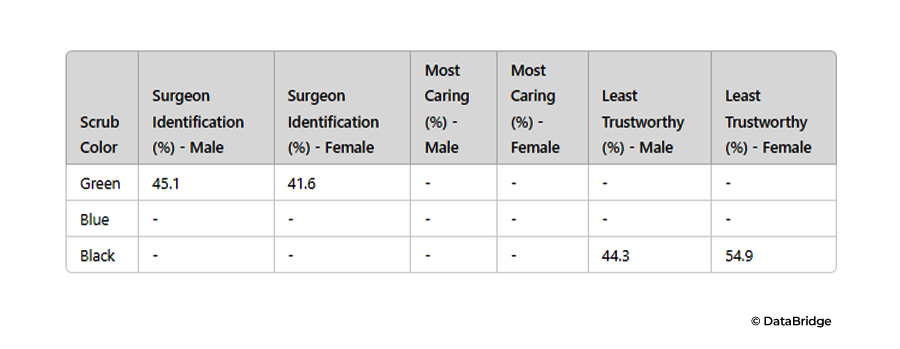Introduction
Medical scrubs serve as more than just uniforms for healthcare professionals; they are essential garments that play a crucial role in maintaining hygiene standards, promoting professionalism, and ensuring comfort throughout long shifts. The evolution of medical scrubs reflects advancements in healthcare practices and the recognition of their pivotal role in infection control and patient care. Medical scrubs originated from the necessity to prevent cross-contamination, as medical professionals in the 1940s became increasingly aware of the risk of infections spreading through wounds. Since then, they have become indispensable in healthcare settings for several reasons beyond infection control.
The growing popularity of medical scrubs is revolutionizing the healthcare industry. More healthcare professionals are choosing medical scrubs for their practicality, comfort, and hygienic benefits. These garments are designed for ease of movement and come with added features such as antimicrobial and moisture-wicking fabrics, contributing to a safer and cleaner work environment.
Data Bridge Market Research analyzes that the global medical scrubs market is expected to reach USD 166.48 billion by 2031 from USD 120.67 billion in 2023, growing with a CAGR of 4.4% in the forecast period of 2024 to 2031.
Visit, https://www.databridgemarketresearch.com/reports/global-medical-scrubs-market
The Role of Medical Scrubs in Healthcare
Medical scrubs are designed with specific functionalities to meet the demanding requirements of healthcare environments. They are crafted from durable, easy-to-clean fabrics that withstand frequent washing and exposure to various contaminants. The design of scrubs prioritizes comfort and mobility, allowing healthcare workers to perform their duties efficiently while maintaining a professional appearance.
The increasing usage of scrubs in healthcare settings correlates with the significant volume of emergency department visits, as reported by the CDC in 2023. With 139.8 million visits recorded, of which 40.0 million were injury-related, scrubs play a crucial role in maintaining hygiene and preventing cross-contamination in these high-traffic environments. Scrubs, particularly surgical and standard types, are designed to be durable, easy to clean, and resistant to bodily fluids, essential qualities that help healthcare professionals manage the diverse needs of emergency patients efficiently. As the number of visits resulting in hospital admissions and critical care units continues to rise which is 18.3 million and 2.8 million respectively, scrubs remain integral in ensuring both patient safety and the operational effectiveness of emergency departments across the healthcare landscape.
Comfort and Mobility: Healthcare professionals endure demanding shifts, often spending hours on their feet. Medical scrubs are designed to provide comfort and unrestricted movement, accommodating the continuous movement required in medical settings. For Instance, In February 2023, Fabletics launched Fabletics Scrubs, developed through extensive research with input from over 6,500 medical professionals, these scrubs redefine traditional workwear by prioritizing durability, comfort, and performance. These scrubs are tailored for different body shapes, ensuring optimal fit and comfort.
Professionalism and Identification: In busy hospital environments, quick identification of healthcare personnel is crucial, especially in emergencies. Scrubs help distinguish between different roles; for instance, nurses and surgeons may wear different colors. They contribute to a sense of professionalism and authority, reassuring patients and facilitating clear identification of different healthcare roles. According to a study conducted at Geisinger Medical Center, a significant majority of participants, 79%, expressed that nursing uniforms enhance their confidence in a nurse’s capabilities. The standardization of scrub colors and designs helps maintain a cohesive and organized environment within healthcare facilities.
Hygiene and Infection Control: One of the primary purposes of medical scrubs is to minimize the transmission of infections within healthcare settings. The fabrics used in scrubs are chosen for their ability to repel fluids and resist bacterial growth. Regular changing and laundering of scrubs are essential practices that contribute to reducing the spread of pathogens between patients and healthcare workers.
As infectious diseases pose a growing concern globally, scrubs play a pivotal role in preventing cross-contamination between patients and healthcare workers. Regular changing and laundering of scrubs are fundamental practices that further enhance infection control efforts. By maintaining clean and hygienic scrubs, healthcare facilities can significantly reduce the risk of spreading infectious diseases, ensuring safer environments for both patients and medical staff alike.
The global infectious diseases market size was valued at USD 20.52 billion in 2023 and is projected to reach USD 32.14 billion by 2031, with a CAGR of 5.77 % during the forecast period of 2024 to 2031. Explore innovative solutions and technologies tailored for the infectious disease market.
https://www.databridgemarketresearch.com/reports/global-infectious-diseases-market
Convenience: Medical scrubs prioritize convenience, offering multiple pockets for easy access to essential tools and personal items like pens and smartphones. Some designs feature secure closures such as zippers, ensuring items remain accessible yet safely stored during fast-paced medical interventions.
Economic Efficiency: Despite their durability and high-quality materials, medical scrubs are surprisingly economical. They withstand frequent washing and rigorous use, reducing the need for frequent replacements. This makes them a cost-effective investment for healthcare professionals and institutions alike.
Enhanced Sanitation: Above all, medical scrubs are designed to maintain high standards of sanitation and reduce cross-contamination risks. Made from robust fabrics, they provide a barrier against bodily fluids and contaminants. This is crucial not only for the wearer's protection but also for preventing the spread of infections within healthcare facilities and to the broader community.
Exploring the Diversity and Functionality of Medical Scrubs Across Healthcare Settings
Standard Medical Scrubs
Standard medical scrubs are the most prevalent type found in healthcare settings, typically comprising a short-sleeve V-neck shirt paired with drawstring pants. These scrubs prioritize comfort and functionality, equipped with ample pockets for carrying essential items such as pens, notepads, and medical instruments. They are crafted from durable, breathable materials such as cotton, polyester, or blends thereof, known for their ease of cleaning.
Surgical Scrubs
Surgical scrubs, on the other hand, are tailored specifically for use in operating rooms. They feature a more streamlined design with fewer pockets to minimize the risk of contamination. Constructed from fluid-resistant fabrics, such as those in green or blue hues, surgical scrubs offer protection against blood and bodily fluids. These colors also serve to counteract the intense lighting in surgical environments, ensuring visibility and contrast. For Instance, The Ministry of Health and Family Welfare's 2022 report highlights a significant healthcare workforce in the country, with a doctor-population ratio of 1:834 and a diverse array of healthcare professionals, including allopathic doctors, AYUSH practitioners, dentists, nursing personnel, and allied healthcare professionals. This expanding workforce underscores a growing need for specialized medical attire like surgical scrubs, which are meticulously designed for use in operating rooms.
Specialty Medical Scrubs
Specialty medical scrubs cater to specific roles or departments within healthcare. For instance, maternity nurses may opt for scrubs designed with additional stretch and comfort features to meet the physical demands of their work. Pediatric nurses, on the other hand, utilize scrubs adorned with vibrant colors and patterns to create a welcoming environment for young patients, contributing to their emotional well-being during treatment. These specialized scrubs not only support healthcare professionals in their roles but also align with the personalized approach required in treating pediatric genetic diseases. Each type of scrub is tailored to enhance functionality while meeting the unique requirements of various healthcare professionals.
Scrub Color Perception: Impact on Patient Trust and Professionalism in Healthcare Settings
The choice of scrub color significantly influences how healthcare professionals are perceived by patients, as highlighted by studies revealing distinct associations between scrub colors and perceived attributes. According to the study conducted at the University of North Carolina Medical Center, Green scrubs were most frequently associated with being recognized as surgeons, chosen by 45.1% of participants for males and 41.6% for females. Blue scrubs were consistently associated with positive character traits such as being caring and trustworthy. For instance, blue scrubs were identified as most caring by 56.6% of participants for males and 48.7% for females. Black scrubs were commonly associated with negative traits like being least knowledgeable, skilled, trustworthy, and caring. For instance, black scrubs were perceived as least trustworthy by 44.3% of participants for males and 54.9% for females. This highlights the significant role that scrub color plays in shaping patients' perceptions of healthcare providers. The study suggests that the deliberate selection of scrub colors could potentially influence patient trust, confidence, and overall satisfaction.
According to another study conducted at Geisinger Medical Center, an overwhelming 95% of participants agreed that solid navy scrubs are perceived as the most professional choice of scrub color. This perception highlights the unintended consequences of scrub color choices, suggesting that darker hues may inadvertently convey negative impressions to patients.
The Essential Role of Preventive Gear in Healthcare Settings
Healthcare professionals often use a variety of preventive gear to enhance infection control and workplace safety. Personal protective equipment (PPE) such as gloves, masks, and face shields are essential components in minimizing the risk of pathogen transmission. Gloves protect against direct contact with bodily fluids and contaminated surfaces, while masks and face shields serve to shield mucous membranes from respiratory droplets and airborne particles. In high-risk environments or when dealing with infectious diseases, gowns or aprons may also be worn over scrubs to provide an additional layer of protection.
These preventive measures, combined with the hygiene practices associated with clean and well-maintained scrubs, form a comprehensive approach to reducing the spread of infections in healthcare settings. With increasing awareness about infectious diseases globally, there is a growing demand for effective PPE that can provide reliable protection against various pathogens, including viruses and bacteria.
Data Bridge Market Research analyses that the healthcare personal protective equipment market was valued at USD 25.18 billion in 2021 and is expected to reach USD 52.62 billion by 2029, registering a CAGR of 9.65% during the forecast period of 2022 to 2029.
Delve into cutting-edge solutions and technologies customized for the infectious disease market. Visit Data Bridge Market Research for deep insights, current trends, and in-depth analysis to steer your strategies and elevate patient care. Gain a competitive edge in infection control and healthcare safety.
Conclusion
The market for medical scrubs continues to evolve as a cornerstone of healthcare hygiene and professionalism. Medical scrubs represent more than just a uniform in healthcare settings; they embody professionalism, hygiene, and functionality critical to effective patient care. As healthcare continues to evolve, so too will the design and functionality of medical scrubs, ensuring that they remain indispensable tools for healthcare professionals worldwide. The adoption of specialized scrubs tailored for different healthcare roles underscores their versatility and functionality, supporting enhanced patient care and operational efficiency. As healthcare facilities worldwide prioritize infection control and patient safety, the demand for high-quality, durable scrubs remains robust.
Explore Further
For insights into the latest trends and innovations in medical scrubs, visit [Data Bridge Market
This article explores the evolution, importance, and impact of medical scrubs in healthcare settings, highlighting their role in infection control, professionalism, and comfort for healthcare professionals.
In recent years, 3M launched surgical hand scrub, which does not require water, is easy to clean, and kills 99% of microorganisms in 15 seconds. Furthermore, Ecolab’s surgical scrubs provide sustained protection for 6-hour.
AIIMS New Delhi, India has broken the world record by having the maximum surgeries for approximately 1.97 lakhs in a year. Consumption of surgical scrub in these countries is increasing due to improving healthcare infrastructure.











